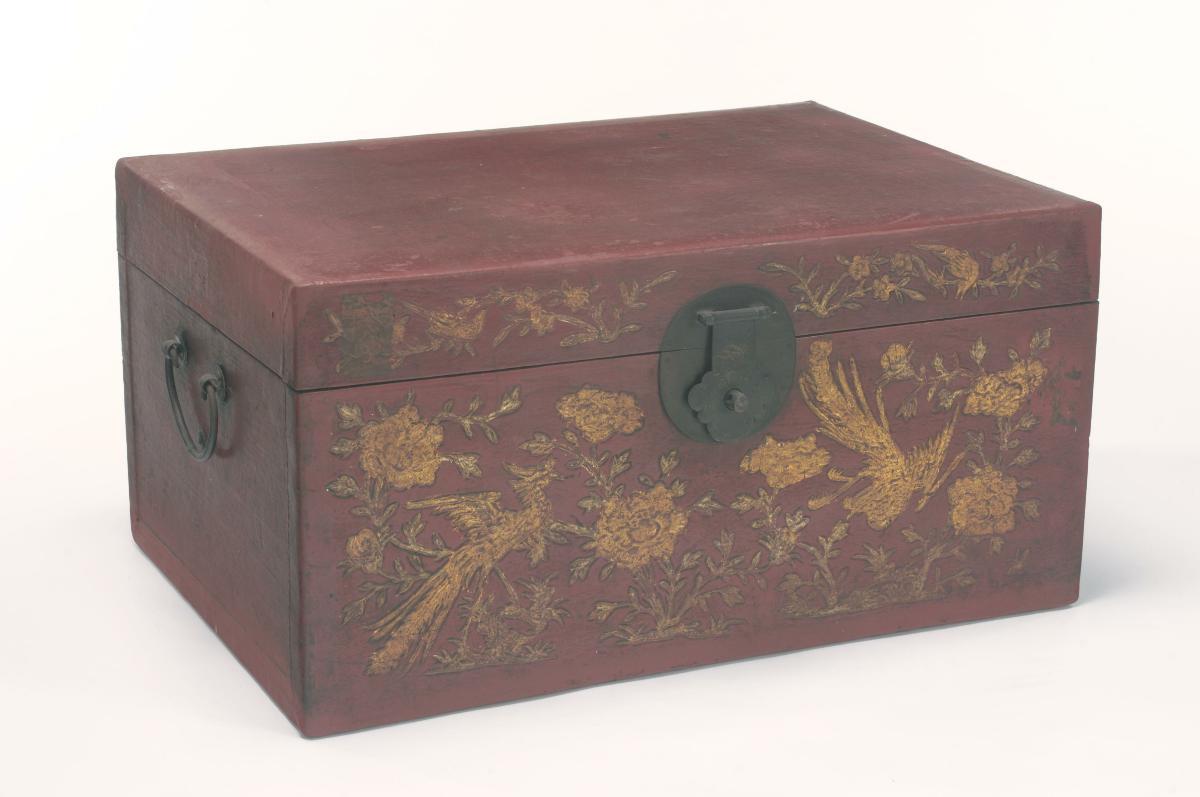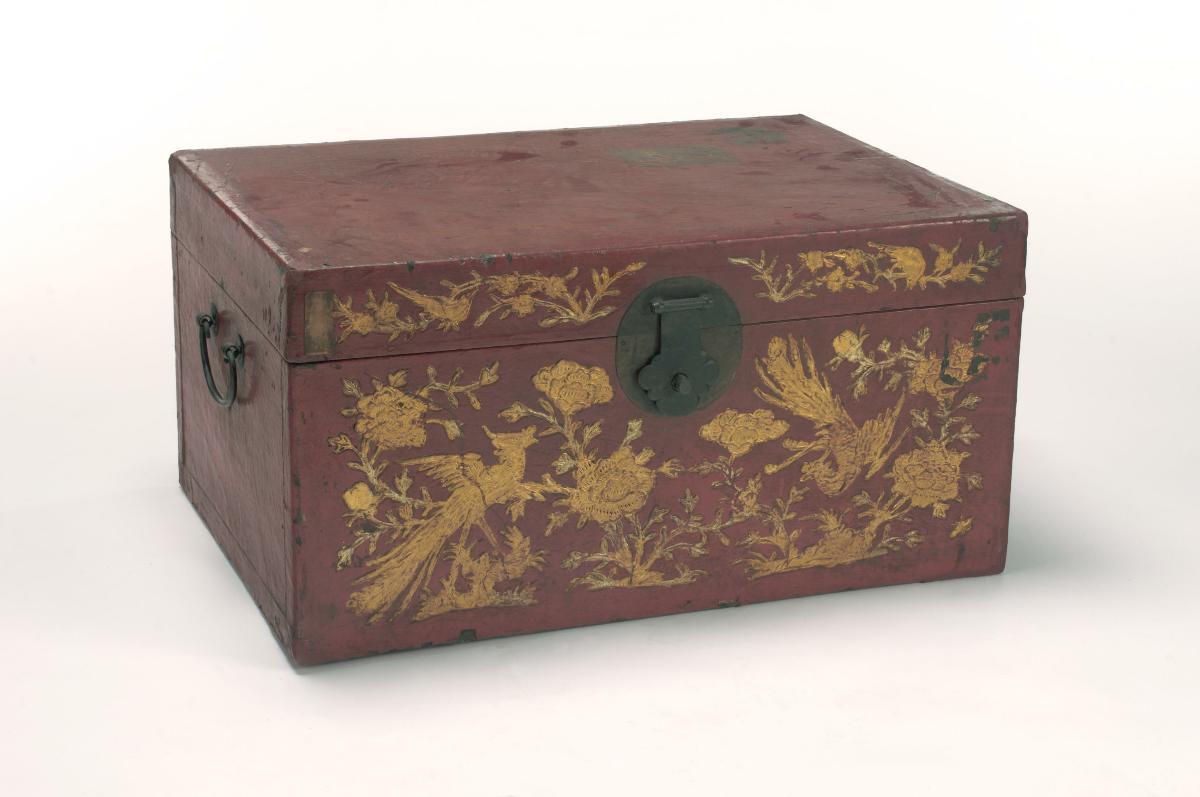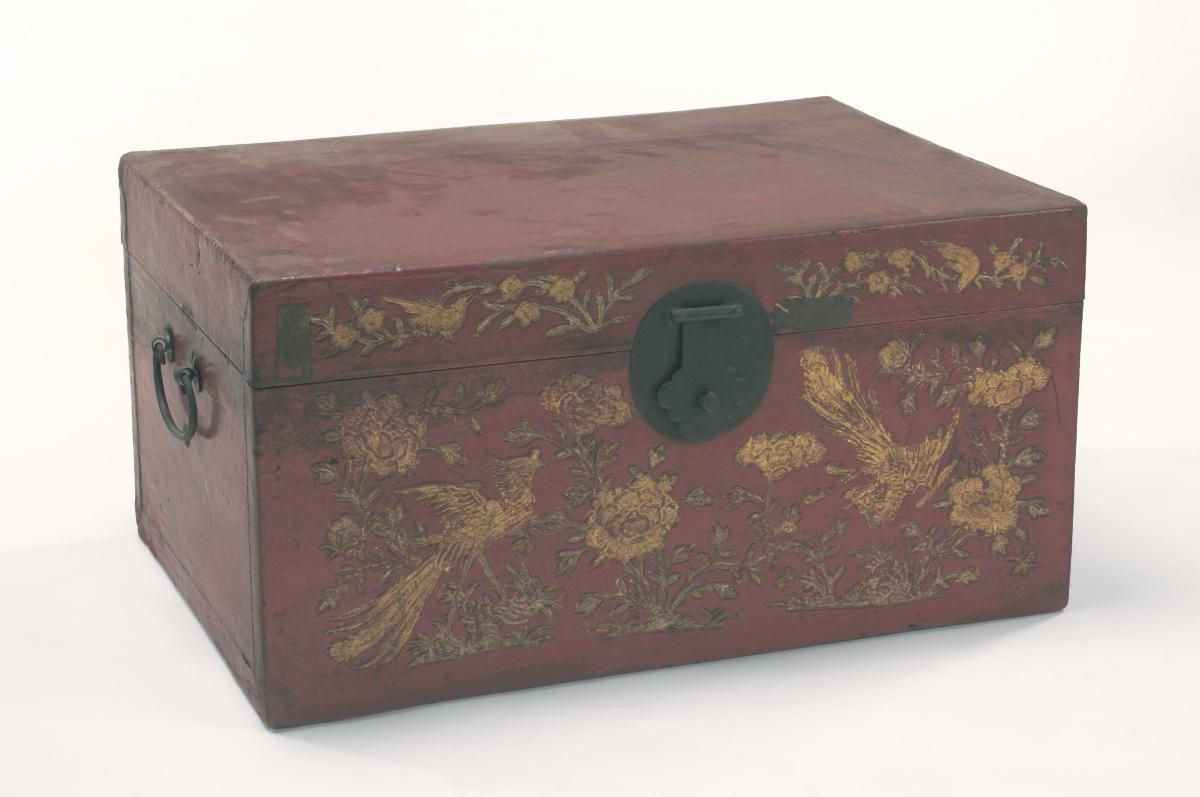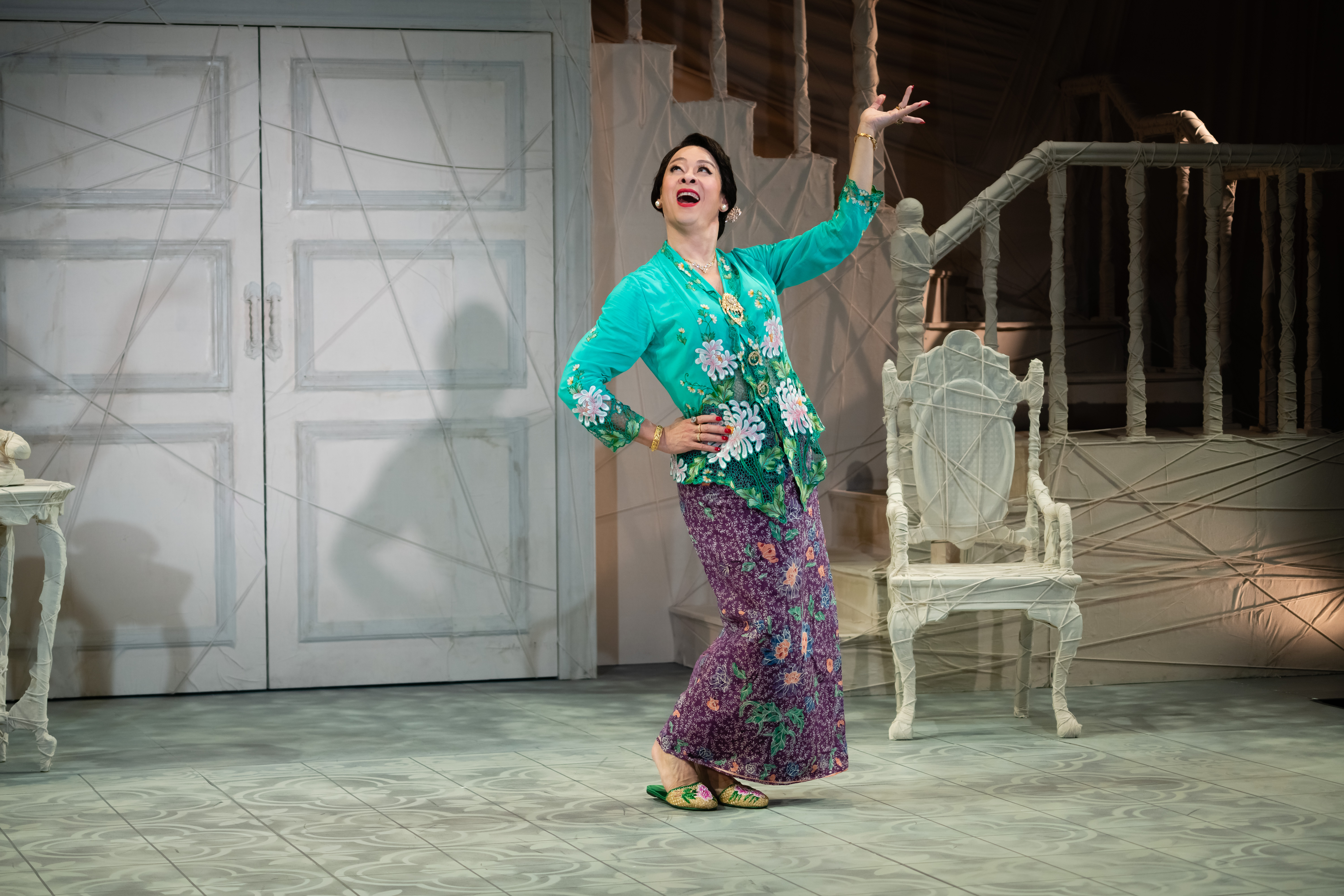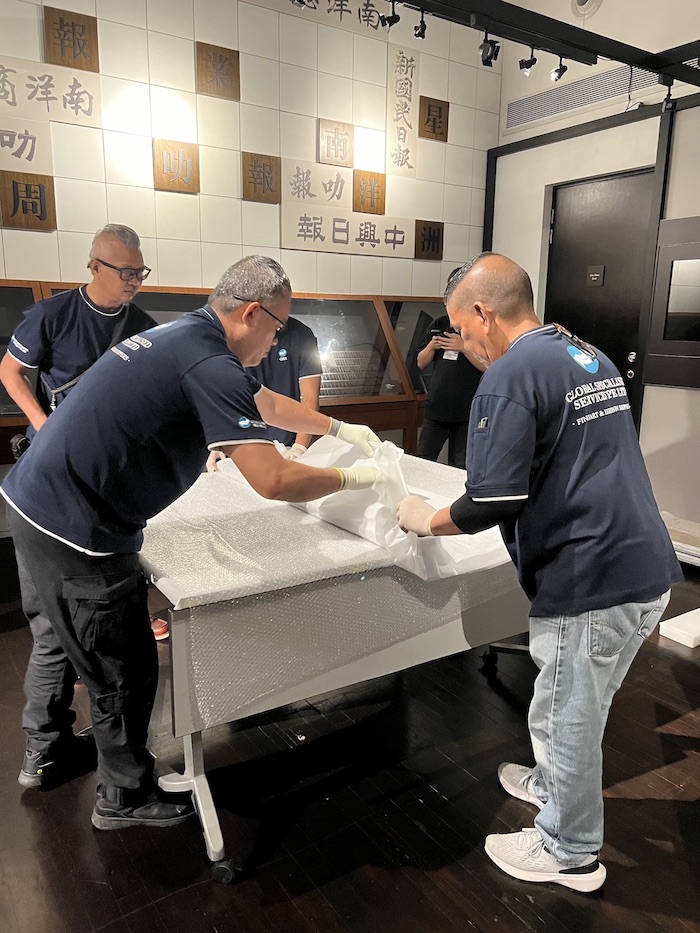This chest is typically European in form, with metal hinges, domed shaped cover and handle but decorated with traditional Japanese lacquer techniques. The artist works with sap from the lacquer tree, mixed with gold and silver dust and coloured pigments. This is painted onto a wooden base in many layers to form a coating that is waterproof and durable. It is also inlaid with mother-of-pearl plaques with panels of maples leaves and other flowers and scrolling vines in gold decoration. Lacquered furniture was one of the most prized Japanese products exported to Europe. Cabinets, chests, and other objects were decorated in the namban (literally, “foreigners from the south”) style. In the late sixteenth and seventeenth century, the word namban was applied to all foreigners except Chinese and Koreans. The term came to be associated with artefacts made for foreigners. The principal customers for namban lacquer were the Portuguese, who first arrived in Japan around 1542 and later the Dutch.






